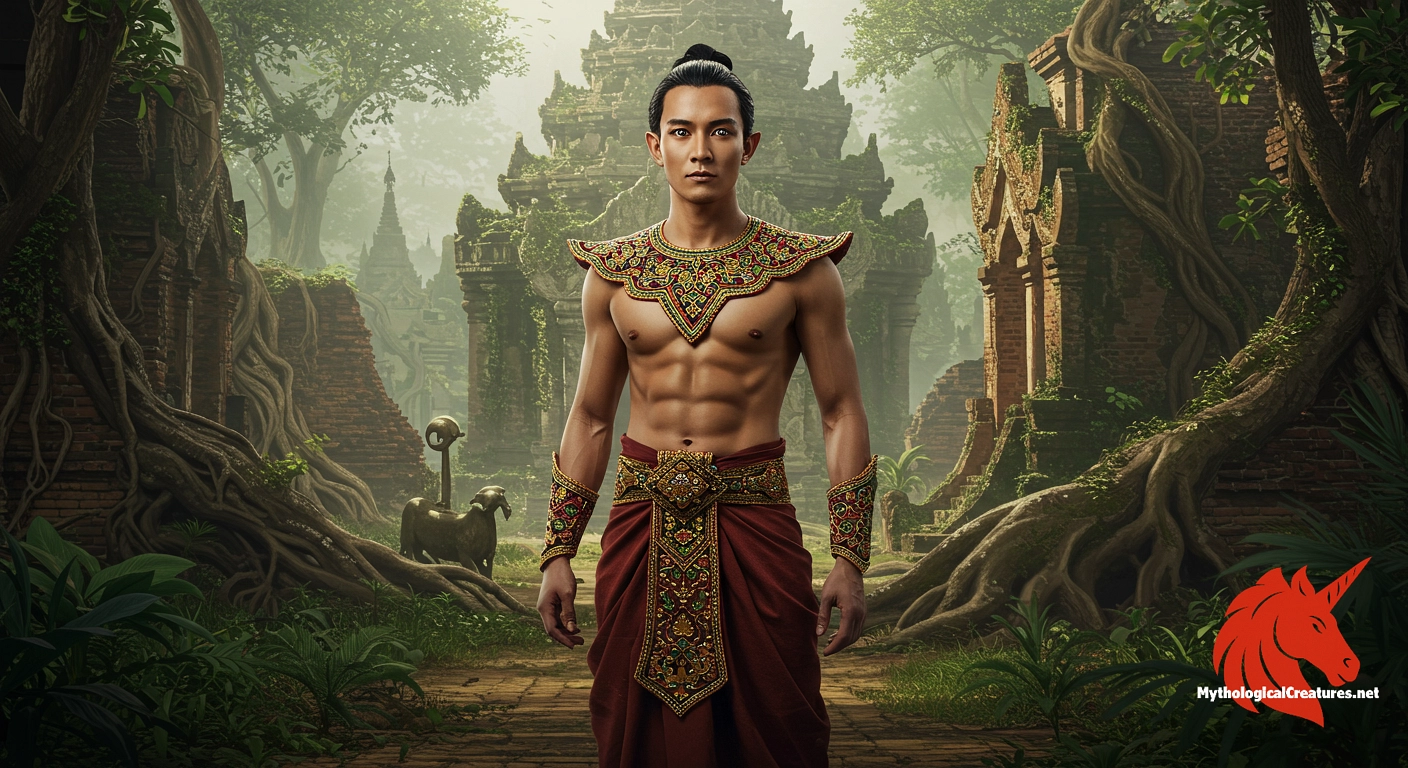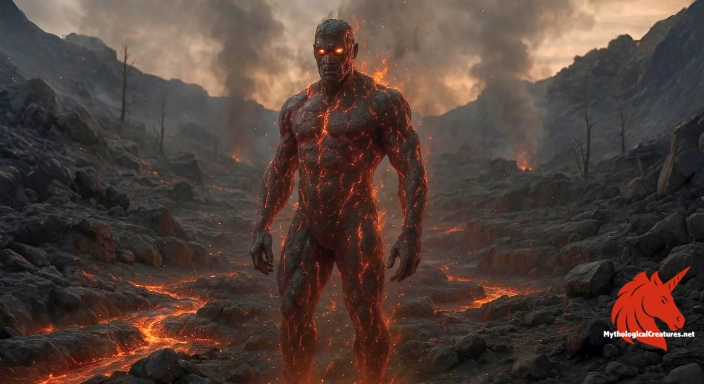Maung Minbyu: Maung Minbyu is a revered nat spirit in the Burmese pantheon, known for his tragic history and royal lineage.

Maung Minbyu
Maung Minbyu - Embodies the convergence of royal legacy and spiritual reverence in Burmese culture
Origins & First Encounters
Maung Minbyu stands as one of the official 37 nats in Burmese lore, his story weaving together the elements of royal grandeur and tragic destiny. His origins are as multifaceted as the cultural tapestry of Myanmar, drawing on legends that blend historical accounts with the ethereal realm of spirits. Possessing a lineage that is linked to proud princes and valiant warriors, his narrative has evolved into a symbol of both bravery and sorrow. Although his early life is shrouded in conflicting tales, his role in the nat pantheon is firmly established, resonating with devotees who seek the intercession of ancestral powers. The presence of his spirit has been celebrated in temple rituals and traditional festivals, which highlight themes of sacrifice and destined transcendence. His myth encapsulates the complexities of personal misfortune and the burden of historical grandeur, making him a focal point of spiritual veneration. Embraced by communities across diverse regions of Burma, his story transcends the boundaries of time, reflecting the transition from mortal legend to divine emblem. In this way, Maung Minbyu embodies the tragic heroism and mystical allure that continue to define the nat tradition in Burmese culture.
Source Texts & Tale Variants
Maung Minbyu’s story is preserved through a variety of ancient texts, folklore, and oral traditions that form the backbone of the official Burmese nat narratives. Detailed court chronicles and temple inscriptions recount his identity as an unnamed prince of Ava and note the dramatic circumstances of his demise caused by opium overuse. Other narratives recount a more tragic early life, identifying him as the reincarnation of Bawlawkyantaw—the young son of Razadarit, whose life was cut short under dire circumstances. A further strand of the lore links him with Crown Prince Minye Kyawswa of the Ava Kingdom, each version enriching the complexity of his character. The diverse documentation found in historical manuscripts and ritual scripts provides multiple layers of interpretation, highlighting both his martial accomplishments and his personal sorrows. Oral narratives passed down through generations add further colour to his legacy, emphasising his dual identity as both a noble warrior and a spirit destined for a fated end. These varied sources reflect a common cultural preoccupation with honour, loss, and the transformative power of destiny. The interplay between documented history and oral embellishment continues to offer a rich field for reinterpretation of his enduring myth.
Form & Powers
Artistic depictions of Maung Minbyu are rich with symbolism, illustrating a figure who bridges the mortal and the supernatural. He is frequently shown in traditional royal attire, which includes intricately embroidered garments and ornate crowns that signify his noble heritage. His visage is rendered with a graceful yet somber expression, reflecting both the heroic vigour of his youth and the pain of his untimely death. The detailed portrayals often incorporate elements such as a subtle, ethereal glow, underlining his status as a nat with a presence that transcends ordinary life. In many images, hints of battle wear are visible, with delicate scars or symbolic wounds that speak to the hardships endured during conflict. His depiction sometimes includes traditional Burmese martial accessories, reinforcing his identity as a warrior prince. Variations in artistic styles point to differences in regional interpretations, with some emphasizing a robust, almost larger-than-life physique, while others portray him as slender and enigmatic. Overall, the physical representations of Maung Minbyu powerfully encapsulate his complex narration, combining regal dignity with an enduring aura of mystery.
Regional Faces
Regional interpretations of Maung Minbyu reveal a fascinating diversity that mirrors the complex cultural landscape of Myanmar. In the highlands of Upper Myanmar, he is commonly revered as a noble warrior with an undying spirit, embodying the ideals of bravery and sacrifice that resonate with local martial traditions. Communities in Lower Myanmar, however, sometimes focus on the more tragic elements of his tale, particularly the association with opium and a youthful demise, which adds a layer of melancholy to his mythos. Local rituals and festivals dedicated to him often integrate elements specific to regional folklore, resulting in differing iconographic styles and ceremonial practices. In some areas, his spirit is invoked through dramatic performances and elaborate shrine displays that highlight both his princely aura and his pathos. The regional variations in his portrayal underscore the adaptability of his myth, allowing each community to shape his legacy around its unique historical and cultural experiences. This multiplicity of narratives reinforces the notion that Maung Minbyu is not a static figure but one whose identity evolves to reflect the dynamics of local belief systems. In every iteration, his story serves as a poignant reminder of the interplay between historical events and spiritual symbolism, making him an ever-relevant figure in regional cultural practices.
Cultural Parallels
When examined alongside mythological figures from other cultural traditions, Maung Minbyu emerges as a striking example of a hero whose life is interwoven with themes of royal sacrifice and spectral legacy. His tale, with its intricate blend of historical fact and mythic embellishment, invites comparisons to similar warrior spirits in neighbouring Asian traditions. In some respects, his narrative parallels Chinese lore, where noble figures transform into deified guardians following tragic or heroic deaths. His story also finds echoes in the Indian subcontinent’s rich tapestry of deified heroes, where personal sacrifice and martial honour are celebrated across generations. The motif of a fallen prince who becomes a supernatural protector also resonates with certain European legends, thereby highlighting a universal human fascination with the transformation of mortal suffering into enduring myth. Such cross-cultural comparisons reveal that his character is part of a broader dialogue about the interplay between mortal life and divine destiny. These comparative observations allow us to appreciate how spiritual symbolism transcends regional boundaries, uniting diverse mythologies through shared archetypes of heroism and loss. In this light, Maung Minbyu not only embodies a uniquely Burmese spirit but also contributes to a global narrative of tragic nobility and mystical transformation.
Legacy & Modern Evolution
Over the centuries, Maung Minbyu’s transformation from a historical figure into a celebrated nat has mirrored the evolution of Burmese cultural identity. His narrative has been continually re-interpreted through the lens of changing political, social, and artistic climates, ensuring that his story remains relevant in an ever-modernising society. Early chroniclers and royal scribes immortalised his life as part of the broader nat pantheon, a tradition that has since been enriched by successive layers of folklore and artistic reinterpretation. Contemporary Burmese art, literature, and theatre frequently draw upon his legacy, using his image to explore themes of sacrifice, loss, and the resilience of the human spirit. Modern cultural celebrations and ritual observances have reinvigorated his myth by seamlessly blending historical fact with spiritual adoration. The modern reinterpretations often balance a respect for historical details with an embrace of symbolic imagery, thereby creating a dynamic dialogue between the past and the present. This blend of historical reverence and creative reinvention serves to underline the enduring power of his myth. Ultimately, Maung Minbyu’s legacy continues to thrive as a powerful emblem of national identity, inspiring both introspection and celebration within a contemporary cultural landscape.
Interesting Fact
Maung Minbyu uniquely embodies multiple historical identities, and his legend illustrates the complex interplay between royal lineage, personal tragedy, and spiritual transformation in Burmese culture.
Quick Creature Info
Origin:
Associations:
Our Mythic Legendary Rating:

Also Sometimes Known As:
Habitat:
Supernatural Powers:
Physical Attributes:
Abilities:
Behavior:
Lore:
Related Creatures, Tales or Lore
- TThagyamin (Burmese Heaven Spirit)
- MMahādeva (Southeast Asian syncretic deity)
- ZZawgyi (Burmese magical alchemist figure)
References
Discover Another Mythical Legend You May Not Have Heard Of?
Uncover the mysteries of ancient folklore and expand your knowledge of legendary beings from cultures around the world.
Dare to Meet the Djall....
Mythical Disclaimer: The images and data on this site are derived from various historical and literary sources, but we have found that many myths often have multiple versions and interpretations across references, sometimes contradictory. As a result, these creature depictions are artistic interpretations—imaginative blends of folklore, legend, and a dash of AI guesswork. Because creature descriptions vary widely, our illustrations and accompanying information represent our best effort to honor mythology while bridging creative gaps. Enjoy these interpretations—just remember, we've done our best to respect the stories and validate available data, but in the realm of mythology, details often shift, imagination leads the way, and nothing is ever set in stone!
Curated by the Mythological Creatures Team (rev. May 2025)
